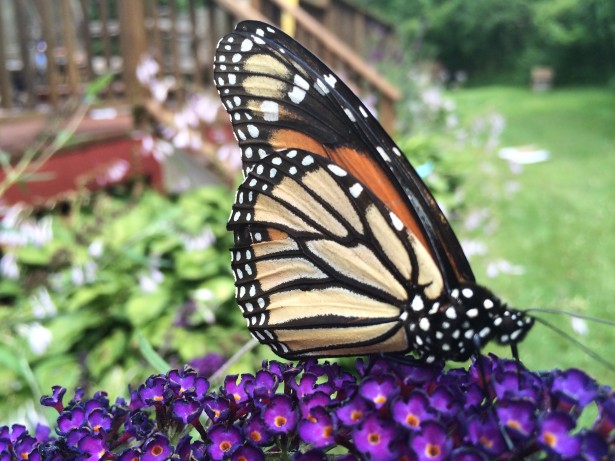 Butterfly gardening is not only a joy, it is one way that you can help restore declining butterfly populations. Simply adding a few new plants to your backyard may attract dozens of different butterflies, according to landscape designers at the University of Guelph.
Butterfly gardening is not only a joy, it is one way that you can help restore declining butterfly populations. Simply adding a few new plants to your backyard may attract dozens of different butterflies, according to landscape designers at the University of Guelph.
Butterflies, like honeybees, are excellent pollinators and will help increase your flower, fruit and vegetable production if you provide them with a variety of flowers and shrubs. They are also beautiful to watch, and are sometimes called "flowers on the wing."
- Begin by seeding part of your yard with a wildflower or butterfly seed mix, available through seed catalogues and garden centers. Wildflowers are a good food source for butterflies and their caterpillars.
- Choose simple flowers over double hybrids. They offer an easy-to-reach nectar source.
- Provide a broad range of flower colors. Some butterflies like oranges, reds and yellows while others are drawn toward white, purple or blue flowers.
- Arrange wildflowers and cultivated plants in clumps to make it easier for butterflies to identify them as a source of nectar.
- If caterpillars are destroying favorite plants, transfer them by hand to another food source. Avoid the use of pesticides, which can kill butterflies and other beneficial insects.
- Some common caterpillar food sources are asters, borage, chickweed, clover, crabgrass, hollyhocks, lupines, mallows, marigold, milkweed or butterfly weed, nasturtium, parsley, pearly everlasting, ragweed, spicebush, thistle, violets and wisteria. Caterpillars also thrive on trees such as ash, birch, black locust, elm and oak.
- Annual nectar plants include ageratum, alyssum, candy tuft, dill, cosmos, pinks, pin cushion flower, verbena and zinnia.
- Common perennial nectar plants include chives, onions, pearly everlasting, chamomile, butterfly weed, milkweeds, daisies, thistles, purple coneflower, sea holly, blanket flower, lavender, marjoram, mints, moss phlox, sage, stonecrops, goldenrod, dandelion and valerian.
Remember that butterflies are cold-blooded insects that bask in the sun to warm their wings for flight and to orient themselves. They also need shelter from the wind, a source of water, and partly shady areas provided by trees and shrubs.